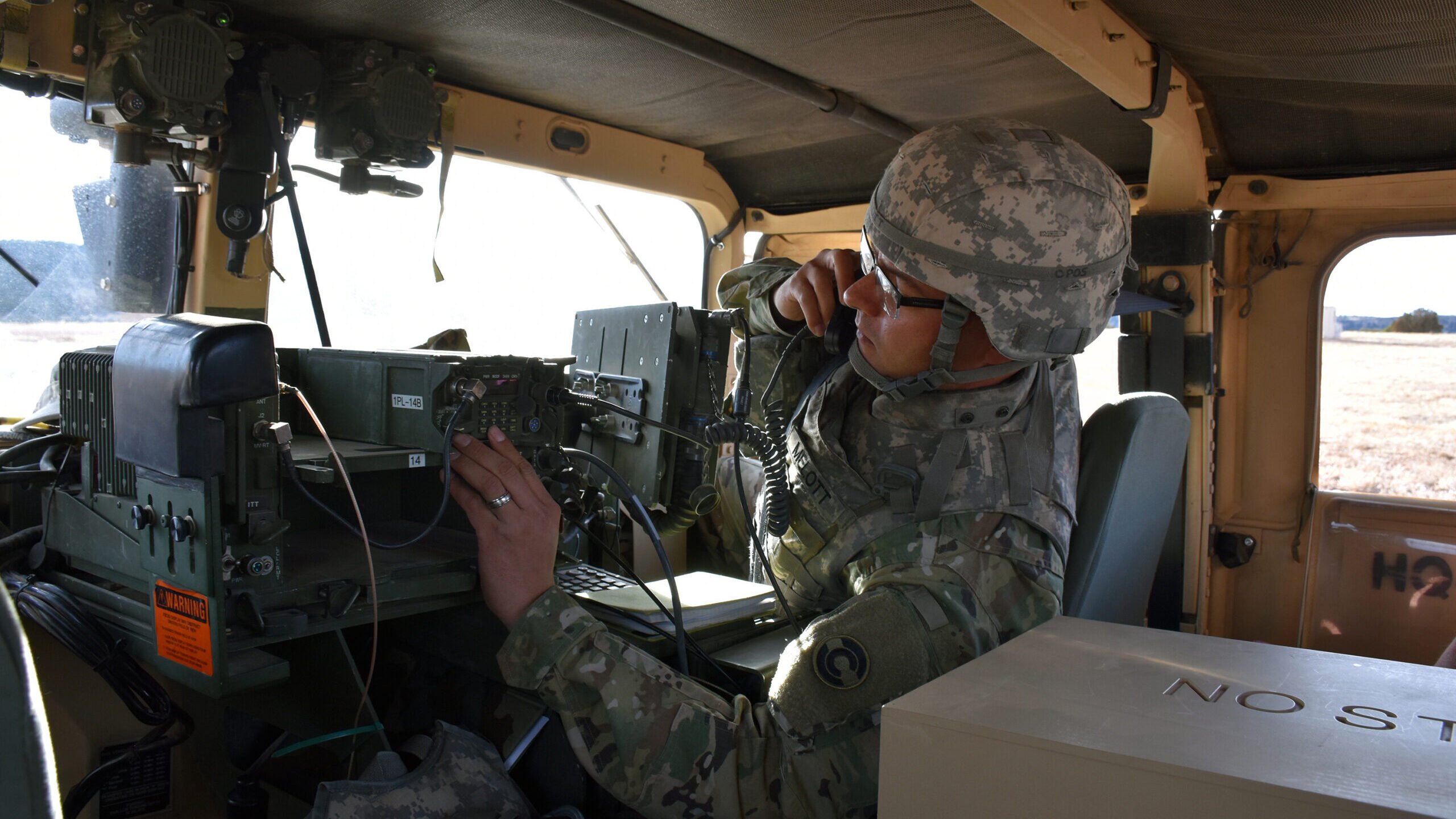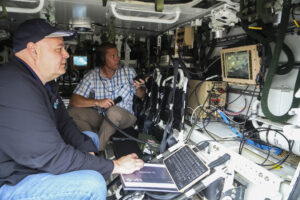
Position, navigation and timing capabilities are critical for soldiers on the battlefield. (Jason Cutshaw/US Army)
WASHINGTON: A new Army lab focused on modernizing the Army’s position, navigation and timing systems recently held a vendor competition to evaluate potential future PNT tools, the facility’s capstone event after its first year in operation.
“It really did open our eyes and gave us an opportunity to interact with industry, let them understand kind of where we’re going from a standard space,” Christopher Jais, an Army official involved in the program, told Breaking Defense. “But then, you know, gave us the insights of, hey, how mature are some of the some of these capabilities?”
The Army’s Open Innovation Lab opened last November as the service rushes to find ways for soldiers to navigate around future battlefields in which current tools, like GPS, may be unreliable or unavailable in the face of electronic warfare by potential foes like Russia or China.
The lab is managed by the Program Executive Office for Intelligence, Electronic Warfare and Sensors, where Jais is the project manager for PNT modernization, at Aberdeen Proving Ground, Md. The goal of the lab is to provide an unclassified forum for the Army and industry officials to discuss and experiment with technologies that the Army may need in the future.
“The challenges we have with the current labs on post is the access is restricted. It’s tough for folks to get in there, it’s really tough for them to bring their equipment in,” Jais said. “What this has really done for us over the last year has has allowed them to bring in their actual …hardware [and[ software, show it to us, show how it performs. And in some cases, even do some integration work into you know, some of the existing platforms we have out there.”
In mid-November, the lab held its capstone event, called Plugfest, centered on capabilities for the Army’s C5ISR/Electronic Warfare Modular Open Suite of Standards (CMOSS), a platform that will allow soldiers to plug in cards embedded with networking capabilities.

C5ISR Center scientists and engineers continued their work as they assessed emerging government and industry positioning, navigation and timing technologies, along with testing the C5ISR/Electronic Warfare Modular Open Suite of Standards (CMOSS) chassis, during the Network Modernization Experiment 2021. (Kaitlin Newman/US Army)
Plugfest, which ran from Nov. 8-19, gave the Army an opportunity to gain insights into capabilities that the service suspected industry had but the service hadn’t tested. The PEO IEW&S team was keenly interested in the PNT cards industry had to plug into the CMOSS box; the size, weight and power of different CMOSS chassis; as well as network switches. While the event was hosted by IEW&S, representatives from network modernization team at Program Executive Office Command, Control, Communications-Tactical and PEO Ground Combat Systems, which purchases new vehicles for the Army.
Jais told Breaking Defense that the prototypes ranged from highly matured technology to early stage products. The Army chose five winners from the event, which received $15,000 awards, according to the Plugfest website. That’s not a game-changing amount of money for a company, but Jais said it’s a good way to start a dialogue between the Army and industry. The five winners also have a shot at a potential prototyping contract in January.
As for next year, the Army lab will continue to work with industry and wants to engage with more program managers across the service. Jais said his team is planning a follow-on competition, but doesn’t know the exact details of that yet.
As for next year, the lab will experiment with anti-jam antennas and handheld PNT solutions, Jais said, though it’s also interested in industry PNT products that could fill any current gaps.
“As we start looking at potential next generations of our dismounted products, this is an opportunity to identify some market research, bring vendors in, see what they already have and work through that,” Jais said.
Army eyes TBI monitoring, wearable tech for soldiers in high-risk billets
“We are also looking at what additional personal protective equipment we can provide to our folks, especially instructors and others who are routinely exposed to blast pressure,” said Army Secretary Christine Wormuth.


























